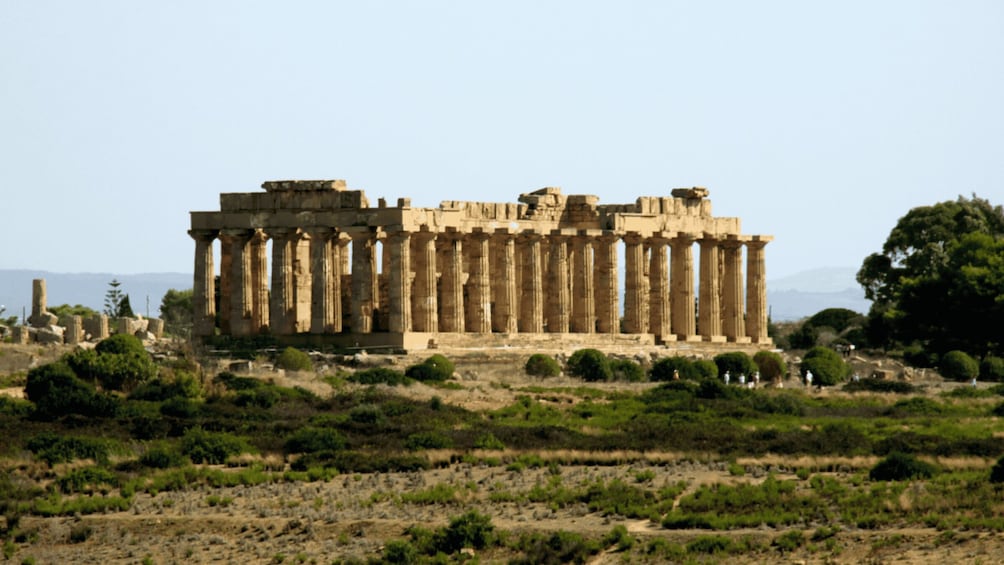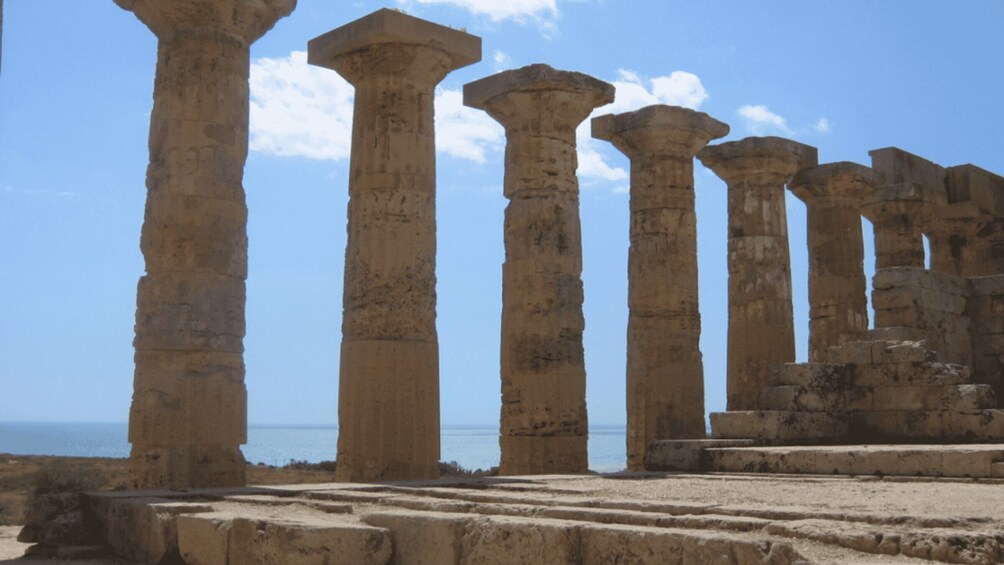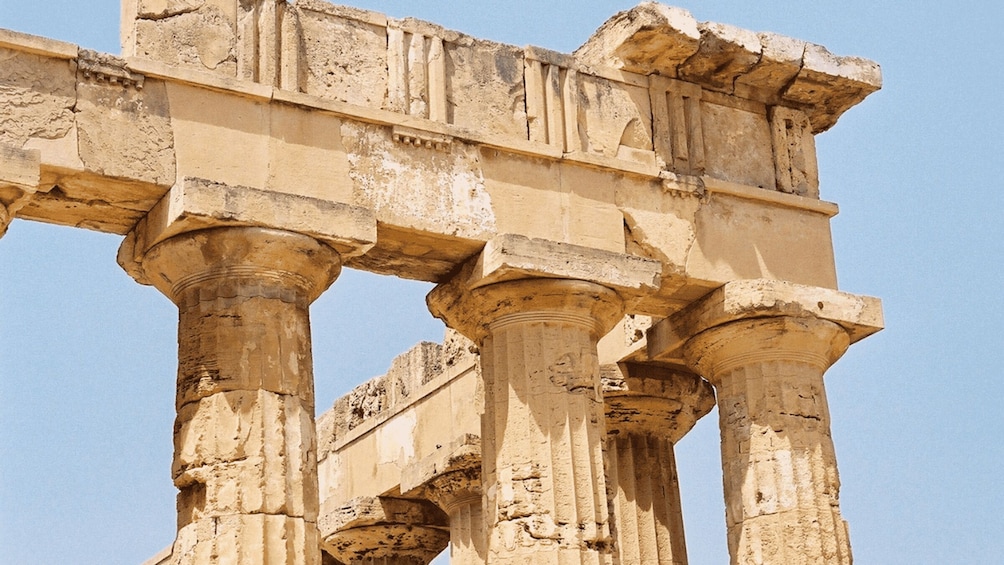Discover the captivating world of archaeology within the ruins of Selinunte, an ancient city fallen to Roman conquest. Explore the remnants of majestic temples, some of the largest of the ancient world, offering panoramic sea vistas. At the acropolis' pinnacle, learn of its 8-meter high wall, the first landmark seen by seafarers arriving from afar. Shuttle bus service, included with your ticket, ensures a seamless journey to and from the Archaeological Park.
Selinunte, named after the wild parsley (selinon) thriving along the Modion riverbanks, was established around 650 BC by Megara Hyblaia's inhabitants. Its urban fabric stretched across two hilly plateaus, secured by the Selinus-Modion and Gorgo-Cottone rivers, harboring the fortified acropolis facing the sea with its sacred buildings and dwellings, and the expansive settlement on Manuzza hill, featuring the polygonal agora.
The flourishing trade, bolstered by the two river estuaries serving as harbours, propelled the city's development over centuries. The eastern acropolis reveals a succession of temple structures, from the early colonnaded Temples C and D of the 6th century BC to the later Temples A and O, and the unique non-colonnaded Temple B from the mid-3rd century BC, depicting the chronological evolution of sacred architecture.
Venture further east past the Gorgo-Cottone to the Eastern Hill's large sacred area, home to Temple G, a colossal edifice dedicated to Zeus and among the largest Greek temples conceived, its construction intriguingly left incomplete. Nearby, Temple F, though modest in size, showcases exceptional sculptural artistry, marking Selinunte's enduring cultural and artistic legacy.
Embark on a journey through Selinunte, where ancient stones and temples weave tales of grandeur, spirituality, and artistic endeavour against the Mediterranean's stunning backdrop.




